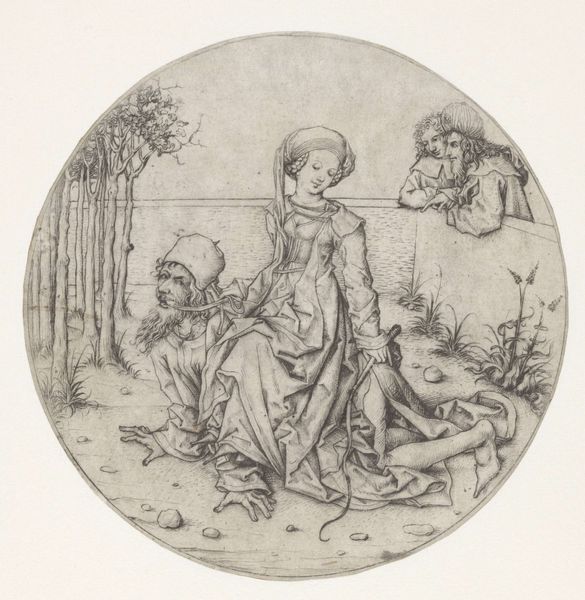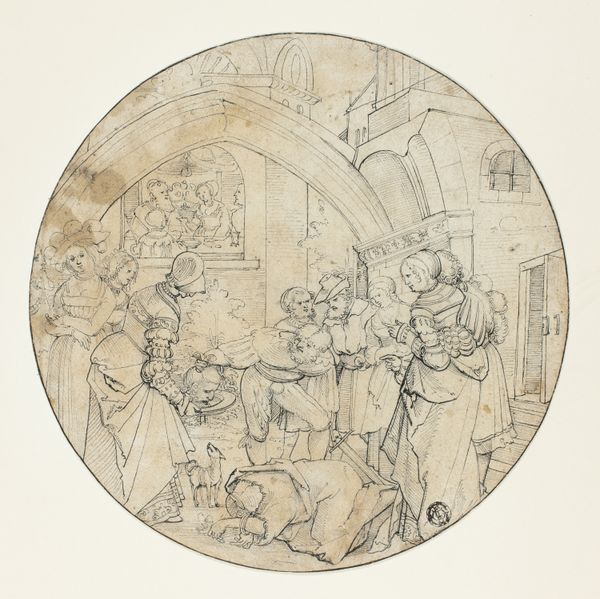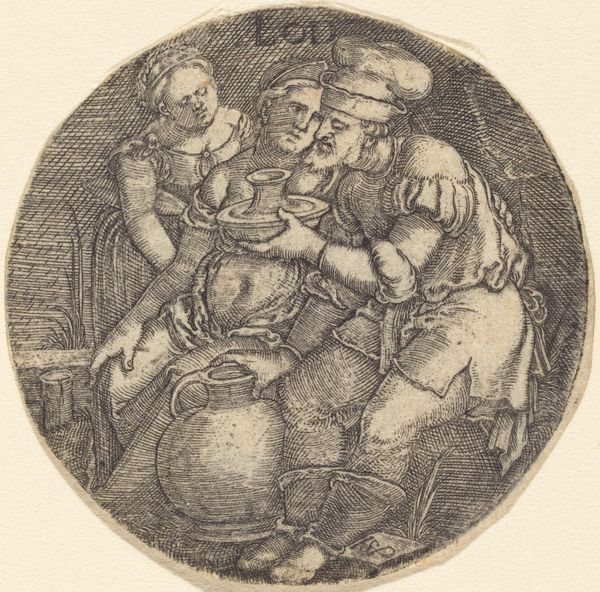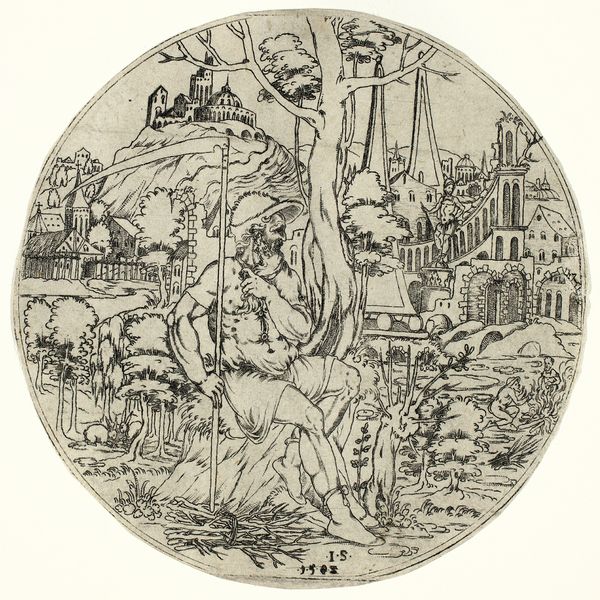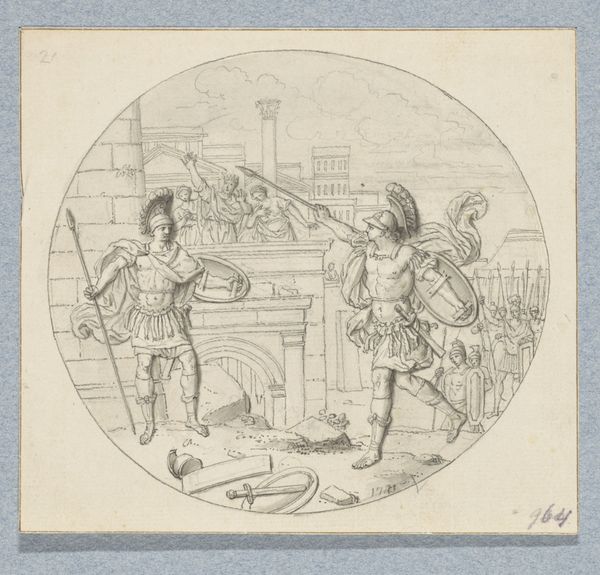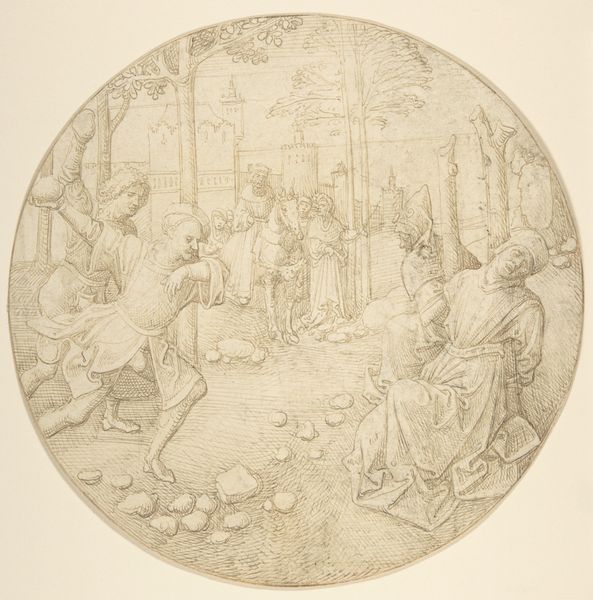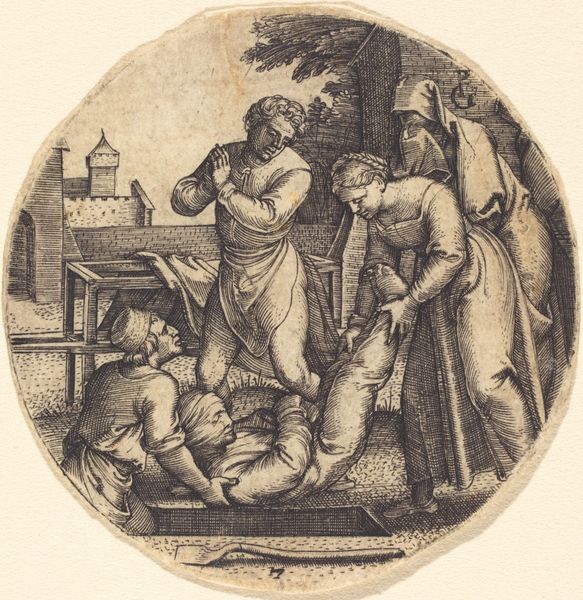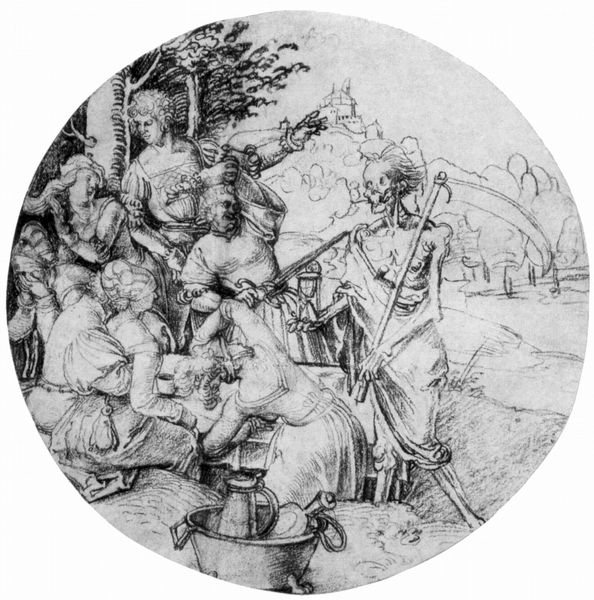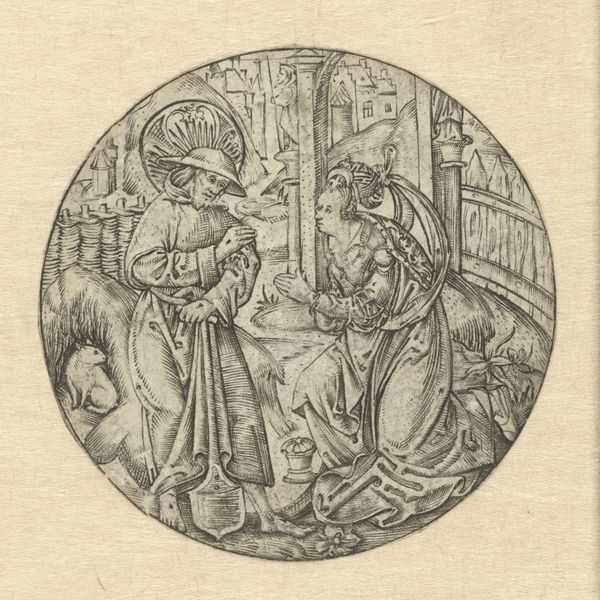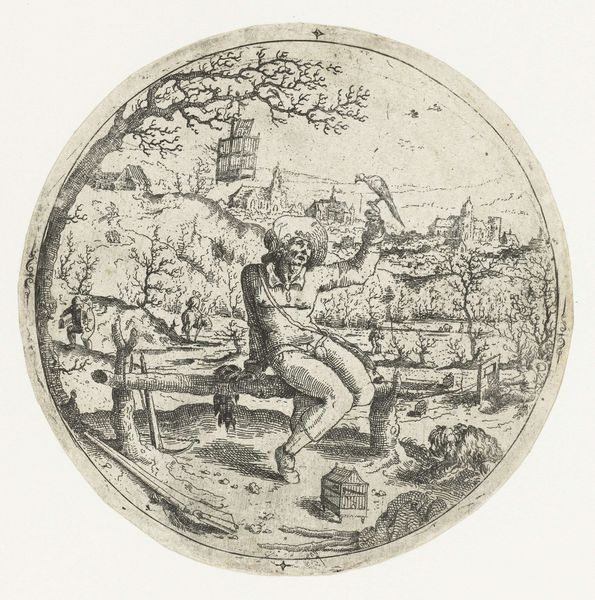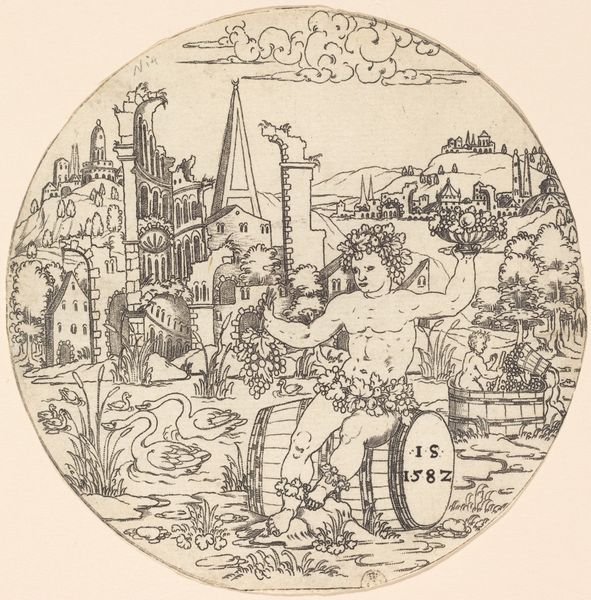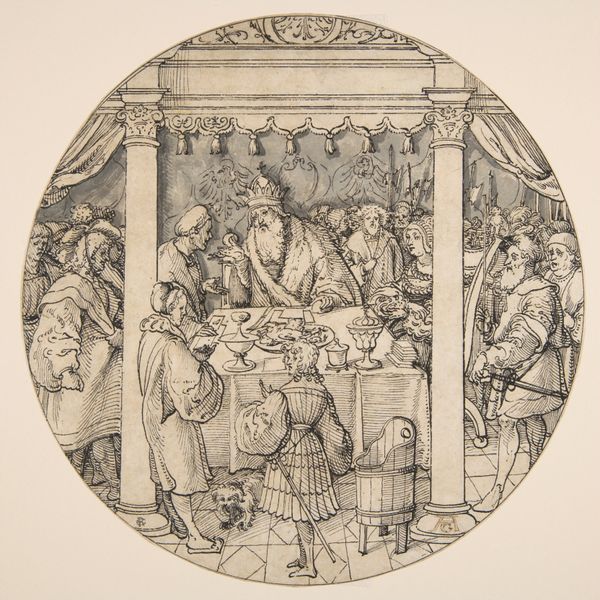
drawing, print, engraving
#
drawing
# print
#
landscape
#
genre-painting
#
northern-renaissance
#
engraving
Dimensions: overall (diameter): 23.7 cm (9 5/16 in.)
Copyright: National Gallery of Art: CC0 1.0
Curator: What a fantastic example of early 16th-century genre art! Jörg Breu the Elder's "The Wine Harvest (September)" is an engraving that predates 1521, capturing a vibrant scene of agricultural labor. The circular composition is delightful. Editor: My immediate impression is the sheer industriousness. Everyone is deeply involved in the act of making, processing, or transporting something. I find this quite compelling because the final product is a luxury. Curator: Exactly. The print showcases the material culture and means of production of the period, with great attention to detail regarding the processes of harvest and wine-making. It reflects on a cyclical process, something embedded in human existence as both mundane work, yet often festive occasions. Editor: Indeed. Think about the sheer labor that is represented in the engraving itself, from tending the vineyards to the literal crushing of the grapes. It connects consumption back to intense physical labor. Note, as well, the inclusion of materials and implements, like the winepress itself—essentially a sculptural element constructed from wood, wedges, and pressure points. Curator: Looking at this, I also see something deeper, reflecting the era's hierarchical societal structure and roles based on gender, with tasks seemingly allotted across men and women involved in wine-making. This image subtly speaks of power and its articulation through labour division and communal practice. Editor: Right. It's also worth noting the circular composition draws the eye to every corner. Every stage, from gathering grapes in the upper right, all the way to the figures on the ladder who are busy working higher up—there is such close attention paid to depicting all these aspects of the harvest. I love the inclusion of such a variety of working bodies. Curator: The composition suggests cycles—natural, human, even economic. I can interpret it as Breu expressing a very holistic viewpoint on the landscape: everything exists together and sustains everything else, right there within a self-contained image, as if the landscape itself were a barrel ready to give sustenance. Editor: Precisely! By focusing on the materials, we expose layers of interconnected systems – from weather patterns influencing grape growth to the craftspeople constructing tools. The engraving captures how we build these systems. Curator: Studying "The Wine Harvest (September)", and thinking through the socio-political factors involved in agrarian economies, definitely prompts me to re-evaluate current discussions around consumption, labor, and equity. It's about situating an engraving into today's ethical and political spheres. Editor: Agreed. It forces a close look at what our world requires of the earth, what transformations it will undergo, and which bodies will facilitate these processes—an engagement that is crucial, even if uncomfortable.
Comments
No comments
Be the first to comment and join the conversation on the ultimate creative platform.

